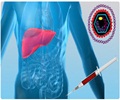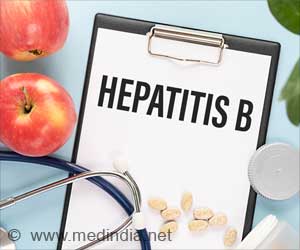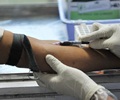Learn about Hepatitis B, its link to liver cancer, and how prevention strategies and regular screening can reduce the disease burden.
- Hepatitis B screening involves blood tests that help identify individuals with chronic hepatitis B infection and guide subsequent treatment
- Prevention strategies for Hepatitis B include //vaccination, prevention of mother-to-child transmission, safe injection practices, and raising awareness through education
- Regular screening and monitoring are crucial for early identification and treatment of liver cancer, especially in high-risk patients
Hepatitis B: the virus and disease
Go to source). However, the effects of Hepatitis B-related liver cancer can be considerably decreased with appropriate prophylactic approaches and timely screening. Dr. A Satya Srinivas, a Medical Oncologist and Consultant at the HCG Cancer Centre in Vijayawada, has provided some useful information.
Navigating the Path of Hepatitis B Diagnosis and Monitoring
Testing and diagnosis:
Hepatitis B screening involves blood tests to detect hepatitis B surface antigen (HBsAg), hepatitis B e antigen (HBeAg), and hepatitis B virus DNA. These tests aid in the identification of persons with chronic hepatitis B infection and guide subsequent treatment (2✔ ✔Trusted Source
Diagnosis of hepatitis B
Go to source).Routine Monitoring:
People with chronic hepatitis B should have their liver function tests, viral load, and alpha-fetoprotein (AFP) levels examined frequently to look for indicators of liver damage or progression to liver cancer.High-Risk Populations:
People born in hepatitis B-endemic areas, those with a family history of liver cancer, and those with a history of injectable drug use or many sexual partners should be prioritized for screening. Healthcare providers must also be vigilant in identifying at-risk individuals and prescribing suitable screening methods.Integration of Hepatitis B Screening into Normal Primary Care Settings:
Integrating hepatitis B screening into normal primary care settings can improve access and early detection. This can be addressed by standardizing screening methodologies and ensuring thorough follow-up for persons infected with chronic hepatitis B.
Strategies for Preventing Hepatitis B
Vaccination:
Vaccination is the most effective technique for preventing Hepatitis B. All babies should receive the hepatitis B vaccine as part of their routine vaccination schedule. Individuals at high risk, including healthcare workers, those with chronic liver disease, and those who have multiple sexual partners, should also be immunized (3✔ ✔Trusted Source
Epidemiology and Prevention of Hepatitis B Virus Infection
Go to source).Prevention of Mother-to-kid Transmission:
An infected woman might spread Hepatitis B to her kid during childbirth. Early screening of pregnant women, antiviral therapy for mothers with high virus loads, and rapid vaccination of infants can all help to reduce mother-to-child transmission.Safe Injection Practices and Blood Screening:
Infected needles, syringes, and blood products can spread Hepatitis B. Blood screening and safe injection methods are crucial. To prevent hepatitis B transmission, it is critical to use sterile needles and syringes, promote safe injecting practices, and properly screen blood and blood products.Education and Awareness:
It is vital to raise awareness about Hepatitis B transmission, preventative measures, and the importance of routine screening. Hepatitis B detection and prevention can be aided by educational campaigns directed at high-risk communities, healthcare providers, and the general public.
Addressing Hepatitis B and Liver Cancer
Hepatitis B is a major public health concern because it contributes to the high incidence of liver cancer. HBV infection can be reduced by implementing effective preventative measures such as immunization, mother-to-child transmission prevention, safe injection procedures, and public education.Regular screening is also necessary for early identification and treatment of liver cancer, especially in high-risk patients. We can reduce the burden of hepatitis B and its related liver cancer cases by implementing comprehensive preventative and screening approaches, saving lives and enhancing public health.
References:
- Hepatitis B: the virus and disease - (https://pubmed.ncbi.nlm.nih.gov/19399811/)
- Diagnosis of hepatitis B - (https://pubmed.ncbi.nlm.nih.gov/27761442/)
- Epidemiology and Prevention of Hepatitis B Virus Infection - (https://pubmed.ncbi.nlm.nih.gov/15968340/)
















